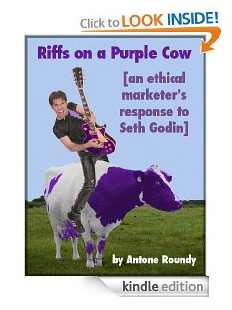When you purchase through links on our site, we may earn an affiliate commission (details)
Applying “Made to Stick” Stickum to Your Business
by Antone Roundy | Add Your Comments | Marketing, Viral
Last October, I posted a review of the book "Made to Stick" (which I highly recommend reading).
Today, I decided to try applying a little of the Made to Stick Stickum to my business. So I opened up Google Docs and created a spreadsheet with seven columns. The first contained the names of all my products. The other six were the six keys to stickiness covered by the book:
- Simple
- Unexpected
- Concrete
- Credible
- Emotional
- Stories
(Remember, these probably don't mean exactly what you think of when you read just the words -- click the link above to see my review for more explanation...or better yet, read the book.)
The next step was to fill in each cell with how each word applies to each product.
"Simple" was...well, simple. I just entered the most boiled-down explanation I could think of of the purpose of each product.
"Concrete" was the next easiest. I entered a specific example or two of how I'd used or benefited from the product. For example, with SEO Content Factory it was "instantly went from blogging twice a month to blogging five times a week," and "traffic up 236%".
With Blog Riffing (which isn't a product, but is something I'd like to make sticky), it was "53% of my blog posts are Riffs".
The rest of the words were surprisingly difficult (I still only have a few of the cells filled in).
Honestly, it was a bit of a wake up call. If I want my products to be sticky and to go viral, I need to figure out how to apply each of the other words to them, and how to communicate the ideas I come up with.
When I read the book, I could clearly see how powerful the ideas were. But until now, I hadn't made a deliberate, systematic effort to apply them to my business.
It's an exercise I highly recommend -- a great tool for exposing the holes in your marketing message. If you succeed at filling in all the cells, you'll be in a great position to make your products stickier.




